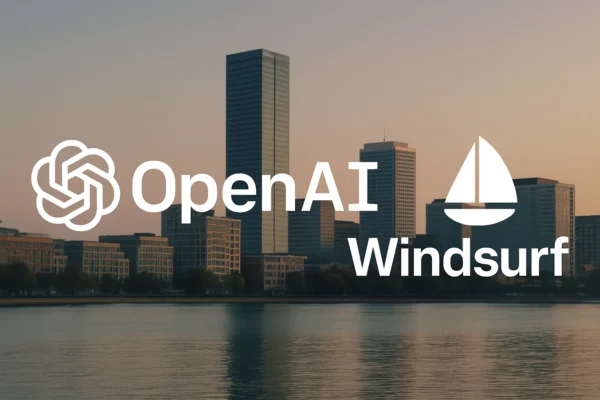
Benchmarking LLMs like GPT-4.1, Claude 3.7 Sonnet, and LLaMA 4 using tools and platforms like SWE-Bench & MMLU.
Large language models (LLMs) are transforming industries, from business analytics and financial planning to legal research and customer engagement. For decision-makers evaluating AI solutions, understanding how these models are assessed is critical for deploying effective tools and avoiding misdemeanours.There are some benchmarking tools or platforms that provide objective metrics to compare LLMs across intelligence, reasoning, speed, and domain-specific capabilities, serving as a strategic compass in a competitive AI landscape.
How Are LLMs Evaluated?
1. MMLU (Massive Multitask Language Understanding)
Tests general knowledge across 57 academic and professional fields, including STEM, humanities, and social sciences. High MMLU scores, such as GPT-4.1’s 90.2% (OpenAI GPT-4.1), indicate broad intelligence, valuable for legal, consulting, and research applications. Limitation: MMLU contains errors in approximately 6.5% of questions, and newer benchmarks like MMLU-Pro are emerging for more challenging tasks (MMLU Issues).
2. SWE-Bench
Developed by researchers from Princeton and other institutions (SWE-Bench), SWE-Bench assesses LLMs on 2,294 real GitHub issues from Python repositories, testing practical coding skills like bug fixing and feature implementation. It’s a gold standard for evaluating AI as a developer co-pilot. Limitation: Primarily focused on Python, which may not reflect performance in other programming languages.
3. HumanEval / MBPP
HumanEval (164 problems) and MBPP (Mostly Basic Python Programming) evaluate code generation and logical reasoning. High scores signal reliability for software development and automation tasks. For example, Claude 3.5 Sonnet scored 92.0% on HumanEval (Claude 3.5). Limitation: These benchmarks focus on basic to moderate coding tasks, potentially underrepresenting complex scenarios.
4. HellaSwag and ARC
HellaSwag tests commonsense reasoning through sentence completion (10,000 sentences), while ARC (AI2 Reasoning Challenge) evaluates scientific problem-solving. These benchmarks gauge an LLM’s ability to handle real-world logic, essential for product design and consumer applications. Limitation: They may not fully capture nuanced human reasoning or context-dependent scenarios.
Comparing the Top LLMs (April 2025)
Model | Developer | Release Date | Context Length | Notable Strengths | SWE-Bench Performance |
|---|---|---|---|---|---|
GPT-4.1 | OpenAI | April 14, 2025 | 1M tokens | Excels in coding, long-context reasoning, cost-effective API | 54.6% (Verified) |
Claude 3.7 Sonnet | Anthropic | February 23, 2025 | 200K tokens | Strong emotional alignment, top coding, instruction following | 62.3% standard, 70.3% with scaffold |
Gemini 2.5 Flash | Google DeepMind | April 17, 2025 | ~1M tokens | Modular compute efficiency, adaptable “thinking budgets” | Not specified |
LLaMA 4 | Meta AI | April 5, 2025 | Not disclosed | Expected leader in open-source, strong multilingual logic | Not available |
Key Model Details
GPT-4.1: (OpenAI) It outperforms GPT-4o by 21.4% on SWE-Bench Verified (54.6% vs. 33.2%). It supports a 1M-token context, ideal for analyzing large codebases, but accuracy drops at full context length (84% to 50% on OpenAI-MRCR). Pricing is $2/$8 per million input/output tokens.
Claude 3.7 Sonnet: (By Anthropic) It achieves 62.3% on SWE-Bench standard and 70.3% with scaffolding, leading coding benchmarks. Its 200K-token context and empathetic tone suit nuanced tasks. Pricing starts at $3/$15 per million input/output tokens.
Gemini 2.5 Flash: (Google) It offers a ~1M-token context and cost-efficient “thinking budgets” for scalable applications. Specific SWE-Bench scores are unavailable, though Gemini 2.5 Pro scores 63.8%.
LLaMA 4:(Meta) It includes Scout, Maverick, and Behemoth models. As an open-source model, it’s expected to excel in multilingual tasks, but benchmark data is sparse. X posts suggest mixed coding performance (LLaMA 4 Critique).
What This Means for Business and Strategy
GPT-4.1: Ideal for R&D, technical operations, and large-scale document analysis due to its strong coding (54.6% SWE-Bench) and 1M-token context. Its API focus makes it perfect for developers building custom enterprise solutions.
Claude 3.7 Sonnet: Suited for HR, leadership coaching, and customer-facing bots where emotional intelligence and instruction fidelity are critical, backed by its top SWE-Bench score (70.3% with scaffold).
Gemini 2.5 Flash: Best for startups and SaaS platforms needing scalable, cost-efficient AI, leveraging Google’s infrastructure and modular compute design.
LLaMA 4: Promising for academic research and regulated industries due to its open-source transparency, though its performance awaits further validation.
Final Thoughts
Benchmarks like SWE-Bench and MMLU are essential for navigating the crowded AI landscape, revealing which LLM aligns with your use case—whether coding, legal analysis, HR, or global chatbots. However, benchmarks have limitations, such as MMLU’s question errors or SWE-Bench’s Python focus, so real-world testing is key. In 2025, choosing the right AI partner is a strategic decision that drives operational success and competitive advantage.





